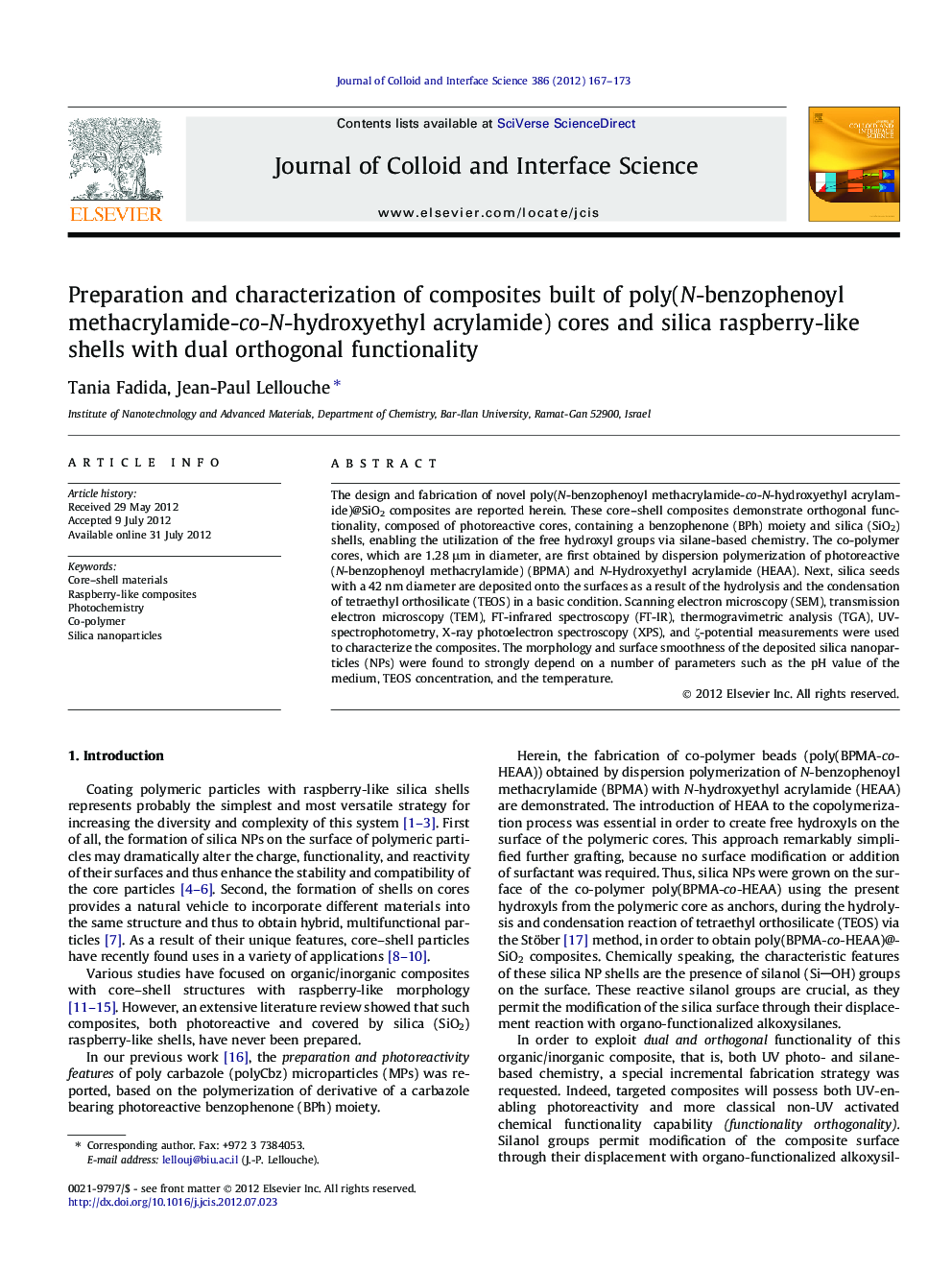| Article ID | Journal | Published Year | Pages | File Type |
|---|---|---|---|---|
| 608105 | Journal of Colloid and Interface Science | 2012 | 7 Pages |
The design and fabrication of novel poly(N-benzophenoyl methacrylamide-co-N-hydroxyethyl acrylamide)@SiO2 composites are reported herein. These core–shell composites demonstrate orthogonal functionality, composed of photoreactive cores, containing a benzophenone (BPh) moiety and silica (SiO2) shells, enabling the utilization of the free hydroxyl groups via silane-based chemistry. The co-polymer cores, which are 1.28 μm in diameter, are first obtained by dispersion polymerization of photoreactive (N-benzophenoyl methacrylamide) (polyBPMA) and N-Hydroxyethyl acrylamide (HEAA). Next, silica seeds with a 42 nm diameter are deposited onto the surfaces as a result of the hydrolysis and the condensation of tetraethyl orthosilicate (TEOS) in a basic condition. Scanning electron microscopy (SEM), transmission electron microscopy (TEM), FT-infrared spectroscopy (FT-IR), thermogravimetric analysis (TGA), UV-spectrophotometry, X-ray photoelectron spectroscopy (XPS), and ζ-potential measurements were used to characterize the composites. The morphology and surface smoothness of the deposited silica nanoparticles (NPs) were found to strongly depend on a number of parameters such as the pH value of the medium, TEOS concentration, and the temperature.
Graphical abstractFigure optionsDownload full-size imageDownload high-quality image (128 K)Download as PowerPoint slideHighlights► Fabrication and characterization of core–shell poly(BPMA-co-HEAA)@SiO2 composites. ► Design of special raspberry-like morphology of the composite. ► Development of composites with dual orthogonal functionality. ► Full control of silica-shell size.
